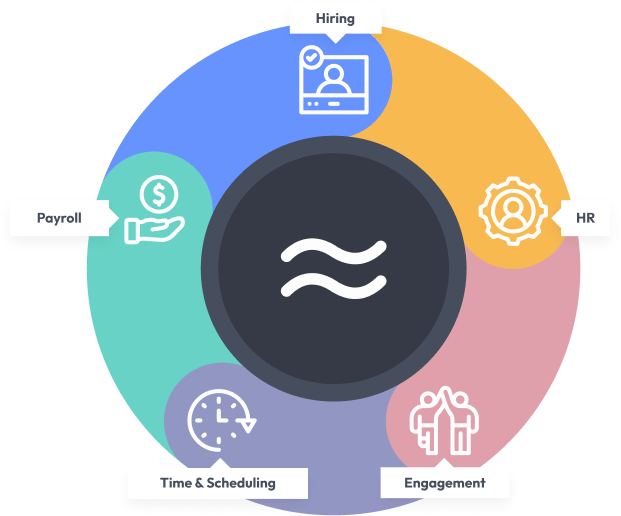How to Hire Teaching Assistants: A Practical Guide for Schools
Hiring the right teaching assistants can feel a bit like assembling a championship team—everyone’s got to play their part, and the stakes are high for both students and staff. If you’re a school leader or administrator, you know that teaching assistant recruitment isn’t just about filling a seat; it’s about finding someone who can support teachers, connect with students, and help your school thrive. But where do you even start? Let’s walk through the nuts and bolts of how to hire teaching assistants who’ll make a real difference in your classrooms.
Why Great Teaching Assistants Matter More Than Ever
The Changing Role of School Support Staff
Today’s teaching assistants—sometimes called school paraprofessionals or aides—aren’t just extra hands in the classroom. They’re essential partners in delivering individualized instruction, managing classroom behavior, and ensuring every student gets the attention they deserve. According to industry research, high turnover in support roles can disrupt learning and put pressure on teachers. And let’s be honest, finding school support staff who stick around isn’t always easy, especially with competition from other sectors.
Retention: The Hidden Cost of Getting It Wrong
Turnover isn’t just a headache; it’s expensive. Studies like those from notch.financial show that replacing a single hourly worker can cost thousands in lost productivity and training. For schools, the impact is even more personal—students lose trusted adults, and teachers lose vital support. That’s why a thoughtful approach to hiring committed employees pays off in the long run.
Step-by-Step: How to Hire Teaching Assistants Who Shine
1. Define the Role Clearly
Start with a crystal-clear job description. Spell out daily responsibilities, required qualifications, and the soft skills that matter most—like patience, adaptability, and teamwork. For inspiration, check out these tips for writing effective handbooks (yes, restaurants do this well—there’s a lot to learn from other industries!). And don’t forget to highlight any unique perks or growth opportunities your school offers. If you need help, here are four tips for calling out benefits in your job postings.
2. Source Candidates Where They Are
Gone are the days when a paper ad on the school bulletin board would do the trick. To find school support staff efficiently, use online job boards, local community groups, and even social media. Platforms like Indeed and Instagram can help you reach a broader pool of candidates. And don’t underestimate the power of referrals—ask your current staff to recommend people who’d be a good fit.
3. Screen and Interview with Purpose
Screening isn’t just about checking boxes. Look for candidates who demonstrate a genuine passion for education and a willingness to learn. Use structured interviews with scenario-based questions—like, “How would you handle a student who’s having a tough day?” For more on effective interview techniques, see these motivational interviewing tips or explore cultural fit questions that reveal how someone might mesh with your team.
4. Onboard and Train for Success
Onboarding is where many schools drop the ball. Don’t just hand over a binder and hope for the best. Instead, create a welcoming, structured process that covers everything from school policies to classroom management. For practical templates, check out these onboarding templates. And remember, ongoing training is key—regular check-ins and professional development opportunities help new hires feel supported and valued.
Common Pitfalls and How to Dodge Them
1. Rushing the Process
It’s tempting to fill a vacancy quickly, especially when classrooms are short-staffed. But hasty hiring often leads to mismatches and higher turnover. Take the time to understand why people leave and what keeps them engaged.
2. Overlooking Soft Skills
Technical know-how is important, but soft skills like empathy, communication, and resilience are what make teaching assistants truly effective. Research from Gallup shows that engaged, emotionally intelligent workers are more likely to stay and make a positive impact.
3. Forgetting Compliance and Recordkeeping
Schools must comply with labor laws, background checks, and sometimes union agreements. Keep accurate records as required by the U.S. Department of Labor. If you’re not sure what’s required, consult your district HR or legal team.
Modern Tools to Make Hiring Easier
Why Automation and Mobile Matter
If you ask me, there’s no reason to be stuck in paperwork purgatory. Tools like Workstream’s hiring automation platform streamline everything from job postings to onboarding, saving time and reducing errors. With features like automated interview scheduling, digital document storage, and mobile-friendly workflows, you can focus on building relationships instead of shuffling forms. Plus, Workstream’s platform is designed for hourly and support roles, making it a natural fit for schools looking to recruit teaching aides efficiently.
Integrating Benefits and Engagement
Offering competitive benefits can be a game-changer for retention. According to DoorDash’s research, benefits are a top factor in attracting and keeping hourly workers. Even small perks—like flexible scheduling or professional development—can set your school apart. For more on the impact of benefits, check out how Starbucks uses benefits to engage hourly workers.
Building a Sustainable Teaching Assistant Pipeline
1. Foster a Positive School Culture
People want to work where they feel respected and supported. A strong, inclusive culture not only attracts candidates but also helps them stick around. For insights on building a winning culture, see this study on job satisfaction and turnover intention.
2. Track What Works—and What Doesn’t
Use data to evaluate your hiring and retention strategies. Are certain sources producing better candidates? Are new hires leaving within the first year? Platforms like Appcast’s recruitment marketing benchmark report can help you benchmark your process against others in the field.
3. Keep Growing Your Own Talent
Consider offering pathways for aides to become certified teachers or specialists. Career advancement opportunities can turn a support role into a stepping stone, boosting both retention and morale. For more on this, see Fortune’s guide to supporting hourly workers.
Conclusion: Hiring Teaching Assistants for the Long Haul
At the end of the day—wait, scratch that—when you’re building your team, hiring the right teaching assistants isn’t just about plugging holes. It’s about investing in your school’s future, one hire at a time. By defining roles clearly, sourcing candidates thoughtfully, and supporting new hires with the right tools and culture, you’ll build a team that lifts up both teachers and students. And if you’re looking to make the process easier, don’t be shy about exploring solutions like Workstream’s platform—it’s designed to help schools like yours thrive, not just survive.
- For more on streamlining your hiring process, check out our restaurant hiring guide (lots of tips apply to schools, too!).
- Explore onboarding templates to welcome your new staff the right way.
- Curious about how benefits can help you engage and retain staff? Here’s what you need to know.
- See how calling out benefits in job descriptions can boost your applicant pool.
- Learn more about Workstream’s approach to hiring and onboarding for hourly and support roles.






